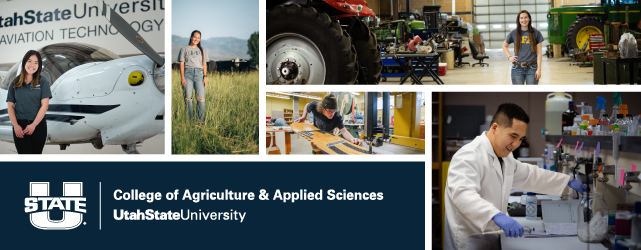Document Type
Poster
Journal/Book Title/Conference
National Agricultural Education Research Conference
Location
San Luis Obispo, CA
Publication Date
5-2017
Award Number
USDA, National Institute of Food and Agriculture (NIFA) 2017-68010-25960
Funder
USDA, National Institute of Food and Agriculture (NIFA)
Abstract
Between 2015 and 2020, an average of 57,900 annual job openings are expected in careers related to agriculture, food, and natural resource (AFNR) areas. With an average of 35,400 new U.S. graduates annually that have expertise in these areas, a large gap is present between the number of expected job openings and the number of well-qualified graduates to fill those positions (Goeker, Smith, Fernandez, Ali, & Theller, 2015). Due to this shortage, employers will have to look elsewhere to fill the remaining thirty-nine percent of job openings. Parents and counselors are often more willing to support agriculture than people believe; yet many lack the knowledge about the vast career opportunities available in AFNR areas (Thompson & Russell, 1993; Smith & Baggett, 2012). Some career areas in AFNR, such as water quality and local food sustainability, have existed for quite some time, but now seem more relevant as the human population continues to grow, creating new challenges in the 21st century. With these challenges, establishing a sufficient scientific and professional workforce that addresses the challenges of the 21st century has become a major research priority for the American Association for Agricultural Education (Roberts, Harder, & Brashears, 2016). Growing challenges coupled with scientific and technological advancements have changed the AFNR career landscape over the past few decades. New and important career areas and opportunities in agriculture like biotechnology, urban agriculture have become central components of agriculture today. Yet, many educational professionals (e.g., guidance counselors, career technology education directors, work-based learning coordinators, teachers, school and district administrators)—all of which are influential in students’ career decisions—are not aware of these new and vibrant career opportunities (Thompson & Russell, 1993). With changes in AFNR careers over recent decades and the desperate need to fill these positions, training of educational professionals regarding these careers is important. By educating teachers and other education professionals on AFNR careers, the gap between qualified AFNR graduates and AFNR jobs can be eliminated.
Recommended Citation
Perkins, D., Sorensen, T. J., Hall, K., Dallin, J., & Francis, D. (2017). Engaging educational professionals and students on the viability of AFNR careers. Innovative poster presented at the National Agricultural Education Research Conference, San Luis Obispo, CA. (p. 53-56)



Comments
The poster was originally presented at the National Agricultural Education Research Conference, San Luis Obispo, CA on May 2017 in the Innovative Poster Category.